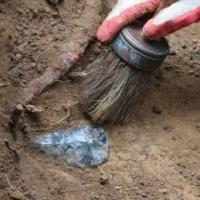Top 10 Most Deadly Rocks and Minerals
Orpiment
The mineral names come from the words "Aurum" meaning "gold" and "pigmentum" – paint. Amazing golden, yellow, saffron and orange crystals resemble a sparkling brush which looks very exotic and tempting, but their luster is fatal because of the carcinogenic and neurotoxic arsenic. Even one touch can poison a person.
Torbernite
This amazing crystal is created due to the interaction of water, copper, phosphorus, and uranium. Such an unusual combination provides a rich dark-olive color. This substance emits radioactive alpha particles which destroy live cells. Minuscule particles get into human's body with water and air, causing lung cancer, leukemia, or other serious illnesses.
Stibnite
This silver-looking rock resembles a bunch of shiny steel swords - needle and prismatic crystals which are assembled into fan-shaped splints. However, its poisonous characteristics are even compared to that of Galena mineral. It can cause dermatitis, rhinitis, pneumonia, gastritis, and even lead to oncological diseases.
Galena
These charming blue minerals hide in their beauty lots of venom. It is known that people who hold Galena, often suffer from lung diseases. As this crystal contains lots of lead, miners are the most vulnerable. The dust in mines penetrates into lungs, blocking the airways and leading to asthma exacerbation.
Hutchinsonite
This mineral can be found in the Western Europe. Its fantastic vivid coloring is created due to the high concentration of arsenic, lead, and thallium. Each of these elements can cause death alone. Imagine their triple power! Such deadly types of minerals affect the nervous system and lead to rapid hair loss.






Coloradoite
During the period of Gold Fever, Coloradoite was often taken for gold. It is usually called fools gold rock. And it does contain a certain amount of precious metal. However, the danger of this crystal is hidden in its ability to emit toxic vapor. It can cause ulcers, tumors, and scarring.